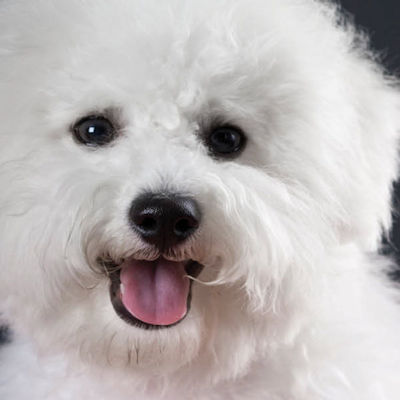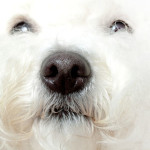REVERSE SNEEZING
Vickie Halstead RN, CVNS, CCRN, CEN, LNC
Reverse sneezing is also called paroxysmal respiration or pharyngeal spasm, is actually not a true sneeze, but is the opposite of a sneeze. Episodes may be alarming, as the owner believes the dog is short of breath, but it is not harmful and causes no permanent damage.
Episodes may last a few seconds to a minute. The dog will extend its neck gasping inward through the nose with a snorting sound, which is repeated several times. Episodes can be interrupted by massaging the throat, pinching the nostrils briefly, or by sticking fingers into the mouth to stimulate swallowing.
The physiology of reverse sneezing is that the trachea (windpipe) is temporarily narrowed by irritation in the soft palate (back of the throat), so that the normal amount of air cannot enter the lungs. This is more common in small dogs due to the smaller diameter of the trachea, may be present for the dog’s entire life, or may develop as the dog ages. Irritants to the soft palate that may stimulate episodes include pollen, dust, chemicals, stress, pressure on the throat with a lead, or excitement and may occur after drinking or eating.
Reverse sneezing can occur in conjunction with serious illnesses such as chronic rhinitis (inflammation of the nose caused by a virus), nasal polyps, tracheal collapse, or Primary Ciliary Dyskinesia (PCD). The latter 2 diseases are evidenced by coughing in addition to reverse sneezing, which you can read about on this site.
There is no need to seek veterinary assistance if reverse sneezing occurs infrequently, such as 1-2 times per week. However, if the episodes occur several times per day, see a veterinarian who may prescribe medication to relieve the pharyngeal irritation, and search for signs of other more serious illnesses. It may be helpful to videotape episodes for your veterinarian to view.
Research for this article includes:
The Merck Veterinary Manual
The 5 Minute Veterinary Consult by Larry Tilley& Francis Smith
Pink Noses And Spotty Skin
Anne Jones RN, BSNE
We can count on two questions coming in to our health committee (Ask Us). Both tend to be seasonal but not necessarily so.
“Why has my Bichon’s nose turned pink?” is the first. That often happens around the first of the year because of the influence of the sun on pigmentation. The more sun exposure, the darker the pigment. In winter, weaker pigment will begin to fade and it is most noticeable to the owner when the nose color lightens. It is not a sign of illness, though it can weaken somewhat with poor health. A Bichon with very strong pigment may never have it fade but another issue that can affect pigmentation is neuter surgery. Hormones seem to affect the intensity of the color so once a dog, male or female, is no longer intact, the pigment may lighten. So don’t worry about a lighter colored nose, wait for summer sunshine and it will usually darken somewhat, though dogs with poor genetic pigmentation may continue to have less intense color year round. Not to worry, he/she is still your beloved buddy.
The other question we get is “My puppy has suddenly developed all sorts of spots (or blotches) on the belly. What is wrong?” and you can feel the agony and the worry in the email. Not to worry!! This is good!! Bichon skin may be spotted or blotchy or just pinkish white. The pattern is determined by the spotting genes present from birth but the color often does not show up until late in the dog’s first year of life, especially in pups born the previous late summer to early winter. That is again because sun will help to bring these spots forth and they often become very intense in a well-pigmented dog at about the time the sun starts its strongest season. There are Bichons with good pigment that have few if any spots and that is okay, too. Remember the spots on the skin are as much part of the genetic programming as that black patch over the eye of some terrier breeds or the spots on a Dalmatian.


